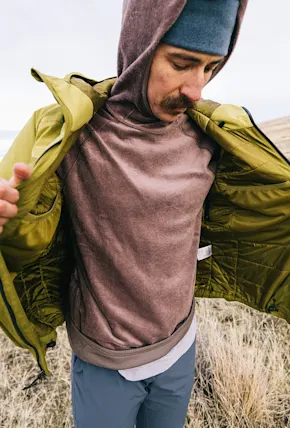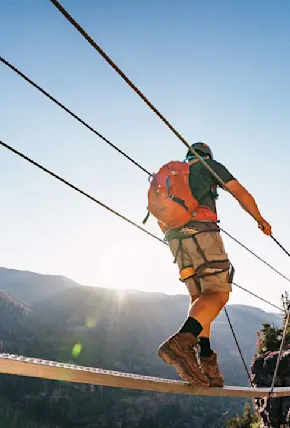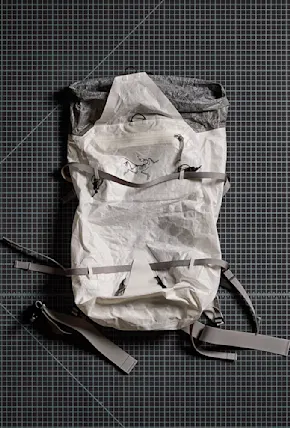Hueco
Named after the world-class bouldering destination Hueco Tanks, Texas, “hueco” is the Spanish word for hollows, describing the type of hold commonly found at Hueco Tanks State Park & Historic Site. These are large circular handholds ranging from a size to fit your whole hand or in some cases, your whole body. Many are underclings, making for challenging climbing.

Chimney
Chimney
A wide, vertical crack large enough for a climber to fit inside and shimmy up. Successful climbers will ascend the inside the chimney by using opposing force with the feet and the body.
Choss
Crumbly, or loose rock, usually considered unsafe to climb. If you’re one of the twisted few who choose to tackle chossy rock, carefully inspect and test holds by gently tapping on it. If it sounds hollow or moves, don’t use it!

Overhang/Roof
Overhang/Roof
An overhang refers to a rock face at an angle greater than 90 degrees (vertical). Particularly steep overhangs that nearly or completely reach horizontal, are called a roof.

Slab
Slab
The type of rock face positioned at an angle less steep than vertical. Successful slab climbing is often dependent on trusting friction, precise footwork, and balance.

Highball
Highball
A highball is a boulder problem that is long and high off the ground, so a resulting fall could result in serious injury. Any boulder taller than 15 feet is usually considered a highball, with an upper limit around 25-35 feet. Even with the most crash pads and best spotters, falling from a highball boulder can result in injury, that’s why successful high ball boulderers climb with the mindset that they won't fall. Added height and risk can make a highball send feel extra rewarding!

Arête
Arête
A fancy, French way to refer to the outward-facing corner of a rockface. Difficult arête routes will demand heel hooks, toe-scums, and slap moves.
Climbing Terms Regarding Movement

Heel Hook
Heel Hook
It seems simple in theory- throw your heel around a hold or feature to use those powerful leg muscles to pull you into the wall. But when used properly, this simple move can is one of the best climbing techniques available for taking weight off your arms, keeping your hips close the wall for balance, and generating power towards your next hold.

Toe Hook
Toe Hook
An essential footwork technique for steep overhangs. Using the friction of shoe-rubber on the top of your toes and flexing your foot up, against the rock. This position is useful for keeping four points of contact on the wall, and distributing body weight to your feet - giving your arm muscles a rest.

Smear
Smear
When there’s a lack of footholds, using friction to of shoe rubber on the bare rock. A tip on smearing - fake it til you make it! The more pressure you put on your smearing foot, the friction there is to help it stick.

Flag
Flag
Flagging is a body position essential for beginners breaking into higher grades! Flagging allows you to use a free-hanging foot as a counterbalance to statically make the next move. By extending your foot out to one side of your body it acts like a tail, keeping your balance and helping you use less energy on the wall.

Lock-off
Lock-off
A static, controlled movement of pulling down on a hand-hold until your arm is in a bent position, then using body tension to hold the locked position in order to reach the next hold with your free hand.

Deadpoint
Deadpoint
A dynamic climbing technique in which the climber times a their movement with the brief instance when their bodyweight is not being pulled downwards by gravity. Not to be confused with a dyno.

Dyno
Dyno
A dynamic climbing movement that requires an explosion of momentum to send your body in the direction of your next handhold. A true dyno requires that both hands to simultaneously leave the wall on their way to grabbing the next holds. While dynos occur in outdoor boulder problems and roped routes, they are often set for indoor competition boulders due to their showy and outrageous nature.
Barn Door
To swing sideways out from the rock face or climbing wall due to being off balance—the movement often occurs when your right foot and right hand (or vice versa) are your only points of contact, thus causing your weight to swing you backwards in a layback sort of position away from the wall, like a barn door opening.

















































